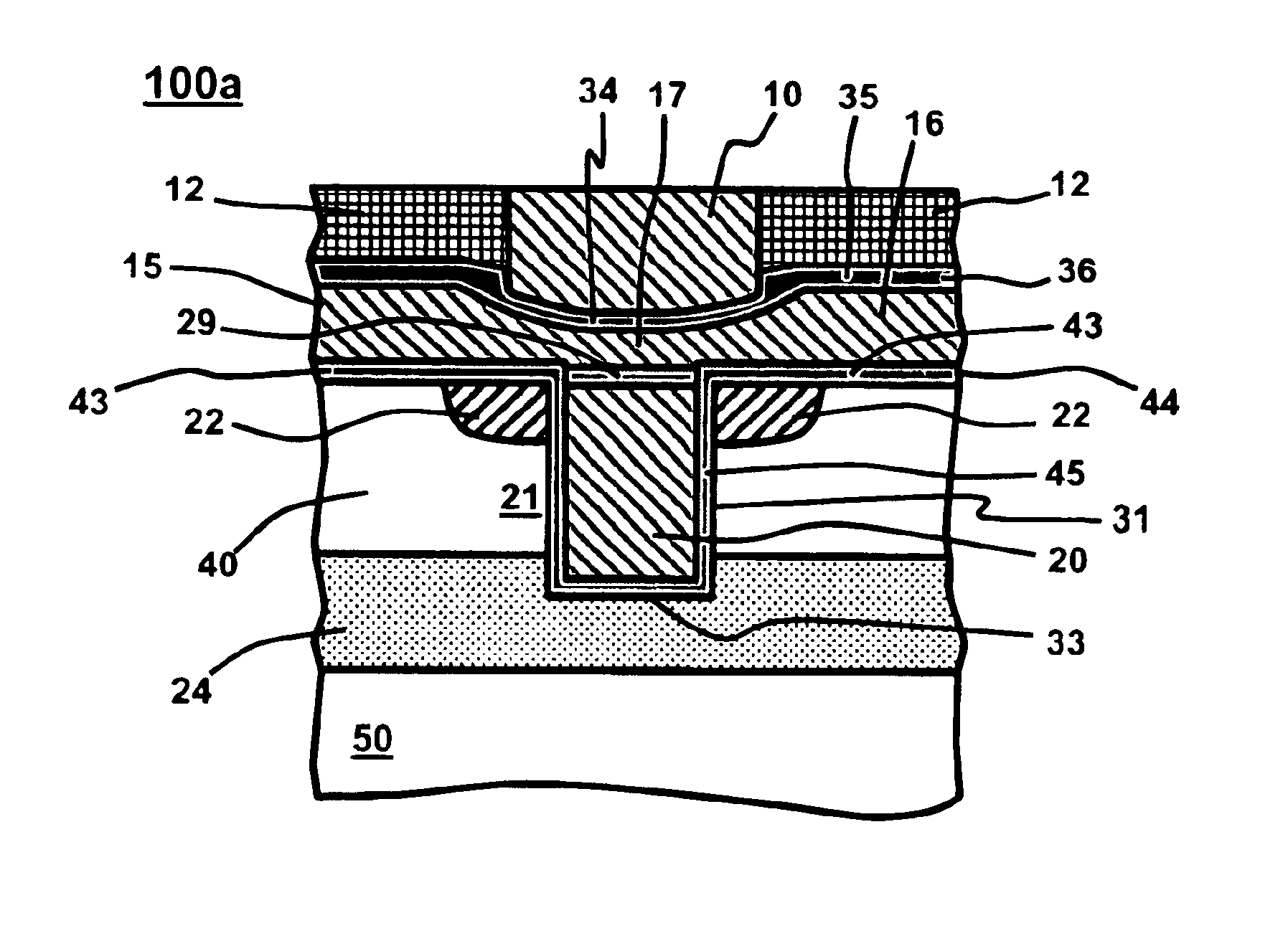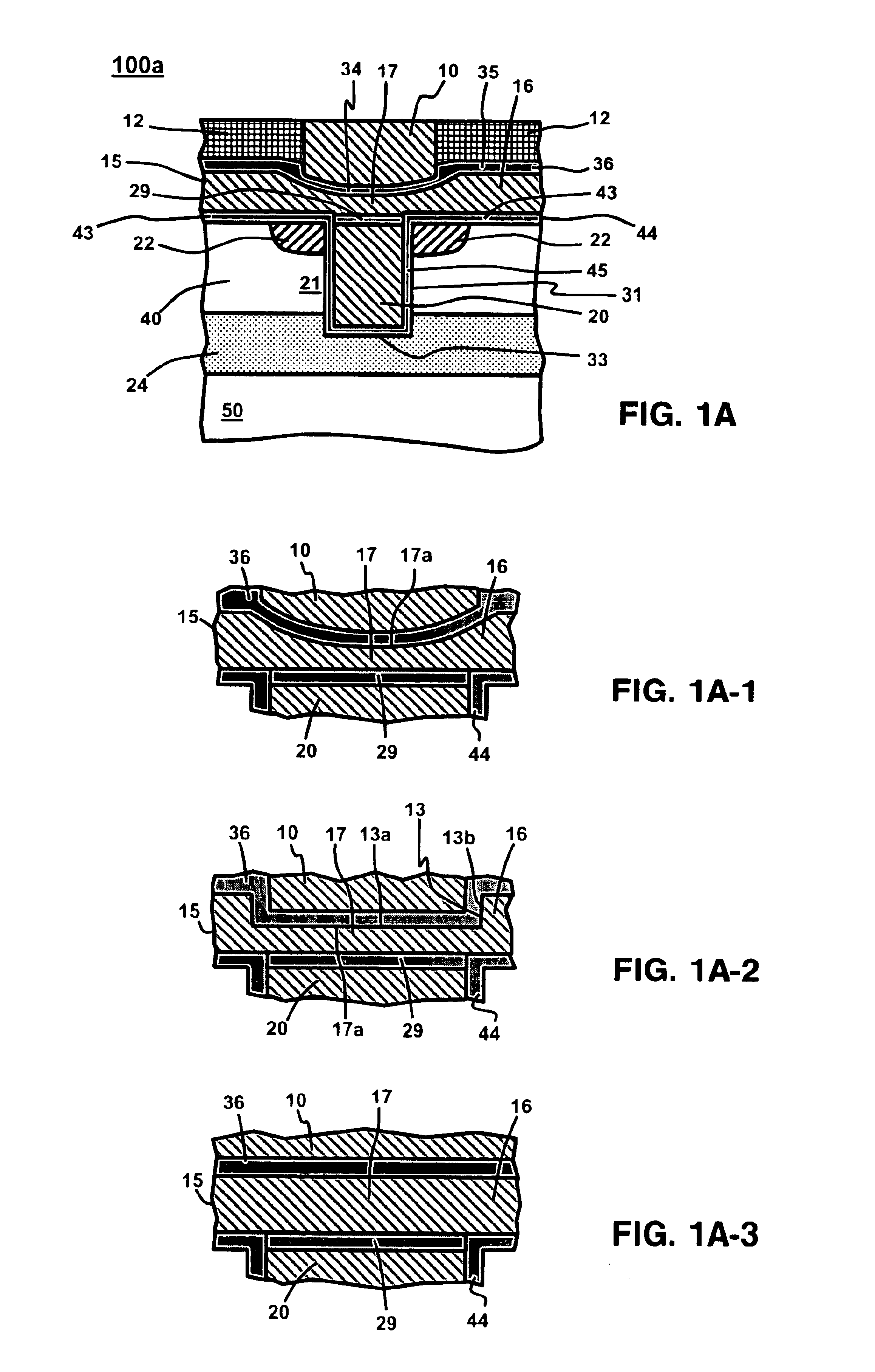Floating-gate memory cell having trench structure with ballistic-charge injector, and the array of memory cells
a memory cell and trench structure technology, applied in the field of nonvolatile memory, can solve the problems of complex process technology for nonvolatile memories, voltage infrastructure, and the scalability of new generation technologies, and achieve the effects of improving eprom and eeprom memory cells, improving manufacturability, and large topography in cell structures
- Summary
- Abstract
- Description
- Claims
- Application Information
AI Technical Summary
Benefits of technology
Problems solved by technology
Method used
Image
Examples
first embodiment
[0039]Referring to FIGS. 1A through 1D, there are shown cross sectional view of a single transistor non-volatile memory cell in accordance with this invention. Memory cell 100a in FIG. 1A comprises a bulk material 50, which can be either a semiconductor material, such as silicon, or an insulator, such as silicon oxide, silicon sulfide or other dielectrics well-known in the art. For the preferred embodiment, the bulk material 50 can be silicon of a first conductivity type (p-type hereinafter) with a lower doping level in the range between about 1E15 atom / cm−3 to about 5E17 atom / cm−3. On the bulk material 50 is a first semiconductor layer 40 of the first conductivity type with a higher doping level than the bulk material 50 and is in the range between about 5E15 atom / cm−3 to about 5E18 atom / cm−3. The thickness of the first layer 40 can be on the order of about 0.2 μm to about 4 μm. Both the bulk material 50 and the first semiconductor layer 40 are collectively referred to as substrate...
second embodiment
[0044]FIG. 1E presents cross sectional view of a single transistor non-volatile memory cell 100e in accordance with the present invention, wherein the memory cell 100e comprises similar provisions as defined in the memory cell 100a in FIG. 1A except with a major difference on the scheme dividing neighboring cells. The memory cell 100e define cell active region 4 through the provision of isolation regions 5 formed by well-known technique such as LOCOS process or shallow trench isolation process (“STI” hereinafter). In a preferred embodiment, the isolation region 5 is form in STI as it can be more precisely formed at smaller design rules. The STI is substantially in a rectangular shape with a thickness on the order of about 0.2 μm and a width of about 0.1 μm, and is typically made from insulator such as oxide or other dielectrics well-known in the art. The object in this embodiment is to minimize capacitive coupling between control gate 15 and memory well 40 in parasitic capacitive co...
PUM
 Login to View More
Login to View More Abstract
Description
Claims
Application Information
 Login to View More
Login to View More - R&D
- Intellectual Property
- Life Sciences
- Materials
- Tech Scout
- Unparalleled Data Quality
- Higher Quality Content
- 60% Fewer Hallucinations
Browse by: Latest US Patents, China's latest patents, Technical Efficacy Thesaurus, Application Domain, Technology Topic, Popular Technical Reports.
© 2025 PatSnap. All rights reserved.Legal|Privacy policy|Modern Slavery Act Transparency Statement|Sitemap|About US| Contact US: help@patsnap.com



